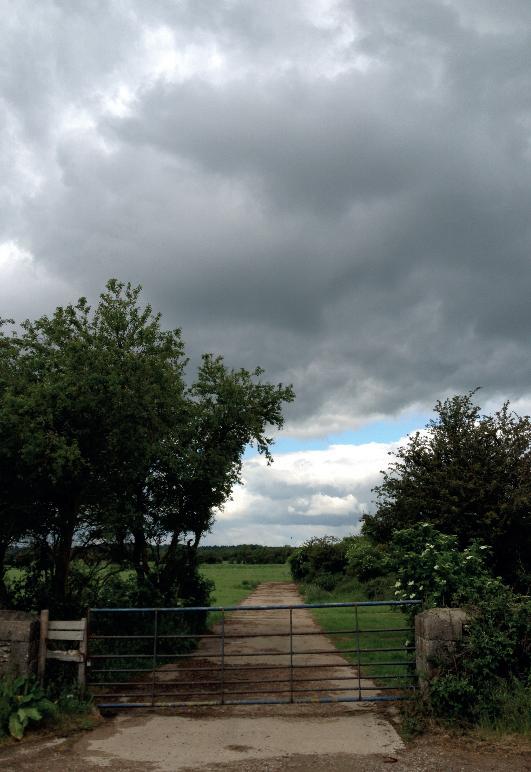
4 minute read
RAF Broadwell
from Lost Airfields
w18 18
Advertisement
RAF Broadwell - control tower
Today, you can still walk on the runways from which 32 Horsa gliders of 512 Squadron RAF and 21 of RAF 575 Squadron were towed behind Douglas Dakota aircraft, carrying men from the 9th Battalion, Parachute Regiment to attack the Merville Battery on the Normandy coast. This battery of obsolete, but still lethal, First World War 14/19 Tschechisch 100 mm guns was trained on Sword beach. Its destruction was critical if British landing troops were not to incur huge casualties.
D-Day at Broadwell
Tension rose quickly at the end of May for the invasion of the continent was not far off. Orders were given to seal the station and impound all mail as of 14.00 on June 2, for Broadwell was hosting over 1,000 troops for the Normandy landing. Upon receipt of the executive order on June 5 a final briefing for those taking part was arranged for 20.00. Fifty-nine crews attended, including six spare crews, for Operation Tonga.
Present at the briefing was the AOC, 46 Group, who stressed the vital importance of the venture before the crews and troops boarded their aircraft. D-Day anniversary at Broadwell, 2012

At 2314hrs on 5 June 1944, Wing Commander Coventry of 512 Sqn lifted the nose of the first Dakota off Broadwell’s runway and pointed it towards Normandy. 575 Sqn’s Wing Commander Jefferson was airborne at 2329. And by 2336, all aircraft were in the air, heading for their turning point between Chipping Norton and Banbury.
By 0500 on June 6th the Merville Battery was destroyed.
19
From the Parachute Regiment’s Pegasus Archive:
“On the 5th June 1944, all thirty-three* of their Dakotas were deployed in tandem with 575 Squadron, carrying paratroopers of the 9th Parachute Battalion, who were tasked with the destruction of the Merville Battery. Due to low cloud and navigational difficulties, all units of the 6th Airborne Division were scattered during the drop, but the problem was acute for the 9th Battalion, mainly because the pathfinders who were to illuminate their zone were dropped too far from it to be able to set up their beacons. Consequently only a quarter of the battalion landed on target.
All of 512 Squadron returned safely to base, though they had little time to rest as they returned to Normandy during the evening of D-Day, towing eighteen Horsa gliders. Some losses were sustained on this mission, Operation Mallard; one aircraft was damaged by flak and another was forced to ditch on the return flight. Five more Dakotas took part in a resupply flight that night, one of which was shot down. Another was lost during a resupply flight on the 7th June, but not through enemy action, rather a tragic case of misidentification on behalf of friendly naval forces below. As the month progressed, the Squadron was called to participate in further resupply missions, but no more losses were suffered. “On the 17th June, 512 Squadron flew the ground crews of 124 Wing to the B6 Coulombes airstrip in France, and on the return flight evacuated one hundred and thirty-eight wounded men so that they could receive proper hospital treatment in Britain. For 46 Group this duty, of flying men and equipment into Normandy and removing the wounded to England, became a daily routine henceforth. These valuable flights continued without respite for several months.”
Pegasus Archive
* The original RAF records from Broadwell indicate 32 rather than 33 gliders
As well as taking troops to war, Broadwell and the nearby hospital at Bradwell Grove brought them home again:
Today, Broadwell is, like Tarrant Rushton and Blakehill Farm, deserted. But, take a tiny lane leading off the A361 and you can drive down the same runway from which Wing Commander Coventry took off on the eve of D-Day. The control tower still stands, as do many other motor transport, accommodation and technical buildings.
When I first visited Broadwell a few years ago, one could still see the domestic site buildings. Now, they’re behind a slab-steel gate and completely closed off from the public.
Driving down the minor road that leads up from Shilton Ford and across to the A361, one of the redbrick generator buildings is still standing and easily seen. The steel warning sign on the wall facing the road is fading and barely legible.
20










